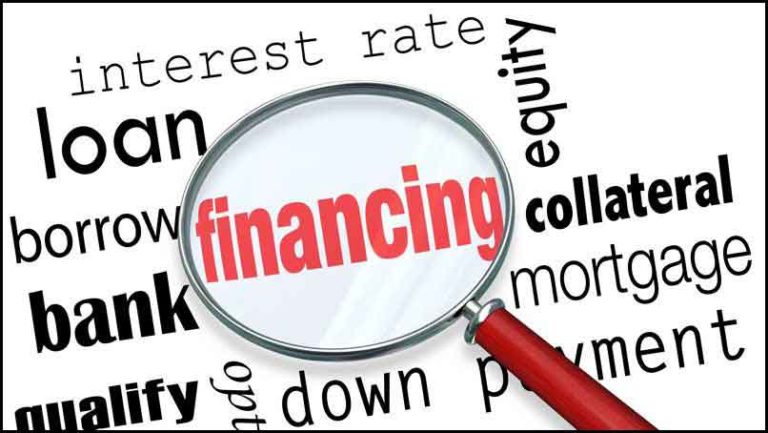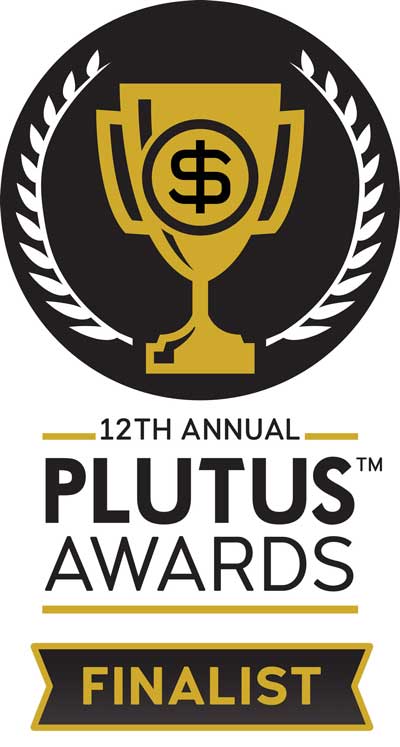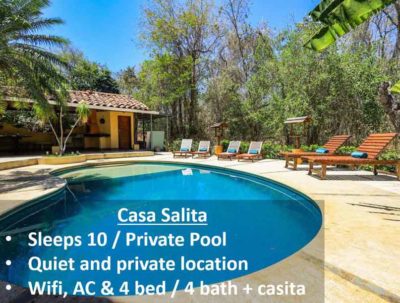HELOC, how do I love thee? Let me count the ways:
- Using a HELOC for investment property so you can look like a cash buyer even when you’re financing
- Smoothing out cash flow when you’re a small business with lumpy earnings
- Having money to tap for emergencies in lieu of a rainy day bank account earning negative return after inflation
Apologies to Elizabeth Barret Browning for swiping a line from her beautiful sonnet, but if I had to write a love letter to a financial instrument, it would probably go to the HELOC. We have tapped our HELOC for all of the above purposes.
We have used a HELOC for investment property purchases multiple times with great success, and it is largely responsible for the expansion of our real estate investments over time.
What is a HELOC?
A HELOC, or home equity line of credit, is a form of financing that is collateralized by your home. A HELOC varies in amount, duration and interest rate, unlike a home equity loan where you borrow a fixed amount, for a fixed period of time and often for a fixed interest rate (though some home equity loans offer a variable rate).
For example, let’s say you have a $300,000 home, and your mortgage has $100,000 remaining on the balance. Banks will typically lend up to 65-75% of your home value, so if your income supports it, you could borrow a total of $195,000 to $225,000 against your home. Your HELOC would then be $95,000 to $125,000 because $100,000 is already borrowed in the form of your first mortgage.
You can open a HELOC against your primary residence or an investment property. In our case, we have had two HELOC’s. Our first HELOC was taken out on a weekend home (or secondary residence) which we have since sold. That HELOC started our real estate journey, as we tapped the HELOC for the down payments of our first three investment properties. Our second HELOC (our current one) was taken out on an investment property, which we still own, so this HELOC is our only active one.
We recently moved to Florida and into one of our rentals. It is mortgage-free, so it definitely has enough equity to support a HELOC. We intend to apply for one against this property, however, we will likely have to wait till the pandemic subsides, as it is harder to get approved for a HELOC right now.
The way HELOC’s typically operate is that there a draw down period of 5-10 years where you can withdraw funds as needed, and you are only required to make interest payments each month. You can pay the principal back on your own schedule but interest is due every month on the borrowed amount. Once the draw down period is over, the outstanding loan becomes due. You will then transition into the repayment period, where the loan gets paid off monthly on an amortized schedule, with equal payments made until the loan is paid off. The repayment period is typically 10-20 years.
The advantages of a HELOC over other types of financing

Yes, a HELOC is simply a type of financing – like a home equity loan, personal loan or credit card. However, it has advantages that these other forms of financing lack:
More flexibility than a home equity loan
In my mind, the biggest advantage a HELOC has over a home equity loan is that you don’t need to borrow a specific amount for a specific time.
Sure, if you’re doing a large renovation project and you know it’s roughly going to cost $50,000, then you can take out a loan for that $50,000 and feel covered. But if you’re not sure how much it’s going to cost, the HELOC gives you flexibility to borrow more or less than the $50,000.
If you end up borrowing less, you do not have to pay interest on funds you don’t end up using.
Better rates than a personal loan
Since the HELOC is collateralized against your home or investment property and not just your credit profile, you’ll get a better rate than from a personal loan.
You can get personal loans through banks and other financial institutions, like SoFi and Marcus. Bankrate is a great source for comparing rates, and it shows a low rate of just under 6% for a personal loan, while HELOC’s start at just under 3%!
Much better rates than a credit card – and you can write a check
If you have to make a big purchase, like an investment property, you probably aren’t going to put it on a credit card. But some people use credit cards to fund a small business.
Certainly people will tap credit cards for big purchases like replacing their appliances or the annual vacation. If you need to write a check for the purchase, doing so from your credit card will typically count as a cash advance and carry a much higher rate.
So even if you can write a check to tap your credit card limit, you will be better off drawing from a HELOC instead.
The drawbacks and dangers of a HELOC

As much as I love HELOC’s, there are drawbacks and even dangers that come with an open line of credit collateralized to your home.
Overspending: If you’re a spender, the relatively easy access to a large pool of money can lead to overspending.
Complacency: The easy access can also make you complacent – you may decide to tap the HELOC rather than shop around for another form of financing. If you’re buying a car, you may be able to secure a better deal than the HELOC – our last car purchase was done at a .99% interest rate for five years.
Lack of additional financing: One of the advantages of the HELOC is that you can use it to buy an investment property and look like a cash buyer in doing so (you’re not slowing the process by applying for financing because the financing is already done against another home). However, if you intend to refinance the home to pay back the HELOC and you can’t get approved for the refinance, you are stuck with the balance on your HELOC. That might mean you’re tapped out and can’t use it for anything else.
Variable interest rate: The interest rate on a HELOC is not fixed – it is tied to prime, and can adjust on a monthly basis. Interest rates are currently very low given the COVID-19 economic conditions, but over time the rate can go up. When you borrow money from your HELOC, you need to be prepared to pay the current interest rate for the length of time you need it.
Bank controls term: If your home loses value – and homes lost $2 Trillion in 2008 – your bank could call the HELOC. This means you can no longer draw it down, or if you already have drawn against it, you would have to pay it back, maybe more quickly than you expected.
Our first HELOC was actually called by the bank in the aftermath of the 2008 financial crisis, but thankfully we were able to secure a new one. This is a plug for having a strong network, as it was one of my professional connections who referred us to a mortgage bank who was able to get the HELOC approved for us!
Loan approval still requires underwriting: Even if your home has the equity in it, you may not be able to get a HELOC if your employment history is uneven, or if the economy is faltering and the bank worries your job will soon be in jeopardy.
At one time, we had a HELOC on another investment property, actually a property we still own today. But a few years ago, in an effort to simplify how many mortgages we had when we were trying to do a cash-out refi, I closed the line of credit. Now that banks are tightening up lending in the COVID-19 pandemic, I wish I had kept it open, since it will be more challenging for us to get another HELOC on the property.
It’s an important lesson: you can’t always get a HELOC when you want it or need it. Since the bank controls the term, you can’t even always keep it open for as long as you’d like.
The benefits of a HELOC greatly outweigh its drawbacks
The list of drawbacks was long, so let that be a signal that you should be careful when using a HELOC. For us though, hands down, the flexibility, ease of use and low interest rate of a HELOC (compared to the other sources of funding mentioned above) greatly outweigh the disadvantages.
We have used a HELOC for investment property purchases multiple times with great success. In fact, we’re in the middle of using our HELOC for investment property that we’re buying to help a friend who’s mortgage was denied.
====================
I do love my HELOC and have summarized the ways. How about you? Have you used a HELOC for investment property, or do you prefer alternative financing options?


 We are Scott and Caroline, 50-somethings who spent the first 20+ years of our adult lives in New York City, working traditional careers and raising 2 kids. We left full-time work in our mid-40’s for location-independent, part-time consulting projects and real estate investing, in order to create a more flexible and travel-centric lifestyle.
We are Scott and Caroline, 50-somethings who spent the first 20+ years of our adult lives in New York City, working traditional careers and raising 2 kids. We left full-time work in our mid-40’s for location-independent, part-time consulting projects and real estate investing, in order to create a more flexible and travel-centric lifestyle.  Financial independence and early retirement is not something we originally focused on, but over time realized it was possible. Our free report,
Financial independence and early retirement is not something we originally focused on, but over time realized it was possible. Our free report, 






